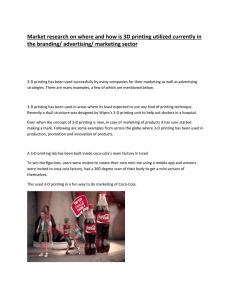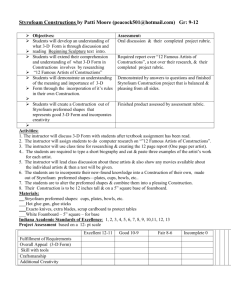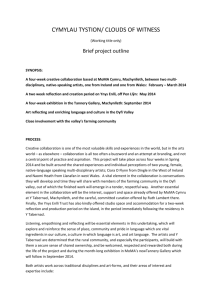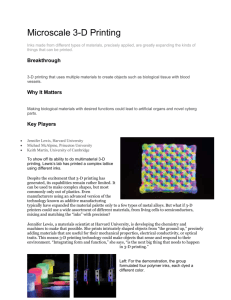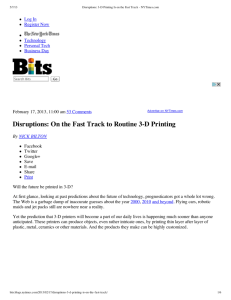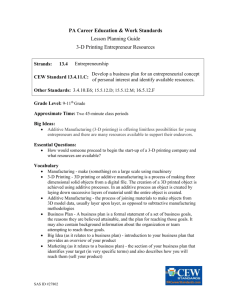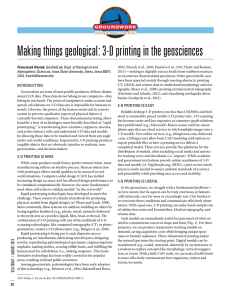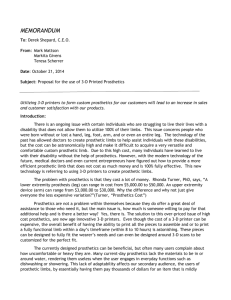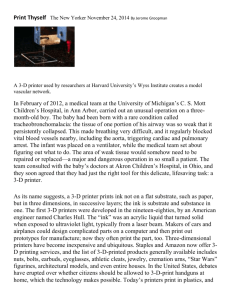int sem 2 MAD review - The New School Portfolio
advertisement
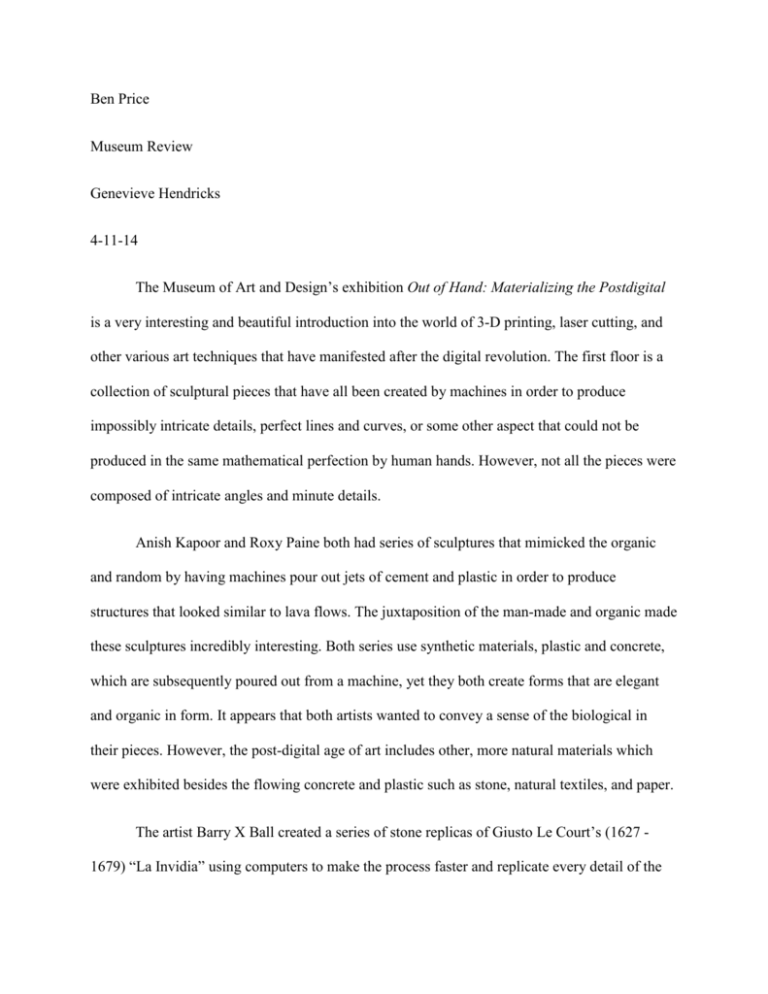
Ben Price Museum Review Genevieve Hendricks 4-11-14 The Museum of Art and Design’s exhibition Out of Hand: Materializing the Postdigital is a very interesting and beautiful introduction into the world of 3-D printing, laser cutting, and other various art techniques that have manifested after the digital revolution. The first floor is a collection of sculptural pieces that have all been created by machines in order to produce impossibly intricate details, perfect lines and curves, or some other aspect that could not be produced in the same mathematical perfection by human hands. However, not all the pieces were composed of intricate angles and minute details. Anish Kapoor and Roxy Paine both had series of sculptures that mimicked the organic and random by having machines pour out jets of cement and plastic in order to produce structures that looked similar to lava flows. The juxtaposition of the man-made and organic made these sculptures incredibly interesting. Both series use synthetic materials, plastic and concrete, which are subsequently poured out from a machine, yet they both create forms that are elegant and organic in form. It appears that both artists wanted to convey a sense of the biological in their pieces. However, the post-digital age of art includes other, more natural materials which were exhibited besides the flowing concrete and plastic such as stone, natural textiles, and paper. The artist Barry X Ball created a series of stone replicas of Giusto Le Court’s (1627 1679) “La Invidia” using computers to make the process faster and replicate every detail of the original piece. Barry X Ball’s “Envy” is an examination of the ideal and the copy. Digital scanning and regeneration of image and dimension has given artists and designers the ability to replicate any form they wish; however, the commentary is on the loss of art, individuality, and authenticity that comes from mass production through technological innovation. The entire floor had examples of replicas, whether from nature or other artists, as well as examples of completely innovative and conceptual structural pieces that are only aided by digital means. Both are completely valid forms of art and each has a commentary of their own. The second floor was more focused on utilitarianism and the implementation of revolutionary manufacturing techniques in fashion, product design, and interior design. There were sweaters, dresses, shoes, chairs, and even plans for housing. 3-D printing and laser cutting has innovated the world of design by making intricate and beautiful pieces cheaper and faster to create without sacrificing strength or quality of materials. If society could print out houses from their computers, or a new hat or pair of shoes, it would change the world and give humans the means to revolutionize the design landscape. This sort of availability of material and design could either create a civilization of cookie-cutter homes, clothes, and other things, or a land of individualized design and innovation. Iris Van Herpen is one of the most innovative fashion designers of the modern era, and each one of her pieces is a perfect example of how technology has changed fashion forever and has turned her works into beautiful and conceptual works of modern art. The dress that is exhibited at MAD is a beautiful creation consisting of a simple top and skirt that are both covered entirely with white and blue 3-D printed organic forms that make the wearer appear as though she has risen from the sea, covered in shells and mollusks. Van Herpen is often inspired by nature for her fashion design, so it is very interesting that she would choose such inorganic ways of manufacturing. However, it is impossible for the human hand to recreate the complex geometry of nature, so mathematical formulas only serve to aid the process. The final stop on the Out of Hand: Materializing the Postdigital exhibition is on the second floor where the mathematics and computer theories come into practice directly with the viewer. The 3-D printing studio contains resident artists’ work, examples of different types of printing, and a scanner that can digitally analyze one’s portrait and print it out. This portion was interesting because of the relationship the viewer has with the technology. The abstractions of art and design are lost when confronted with a relatable and interactive piece such as a portrait of one’s self printed out of a machine. This is a great way to end the exhibition because it gives one the experience of being scanned into the digital world while also giving them something to take home. The most important thing to take away from the MAD Out of Hand: Materializing the Postdigital exhibit is to understand the intersection of the digital world with the real world. These designs and art piece start as purely conceptual thoughts which then manifest themselves into sketches and computer diagrams which are read and magically transformed into tangible things in just a few hours. There are attempts now to turn 3-D printers into household items. There are certain ramifications, such as the printing of gun parts or the threat of copyright infringement, but the benefits are so fantastic. With advancements in this technology comes the hope of printed organ transplants, cheap and easily manufactured homes, and the ability for people to be creative and experimental with art and design in the comfort of their own home. With the fusion of technology and design we can revolutionize every industry there is.


